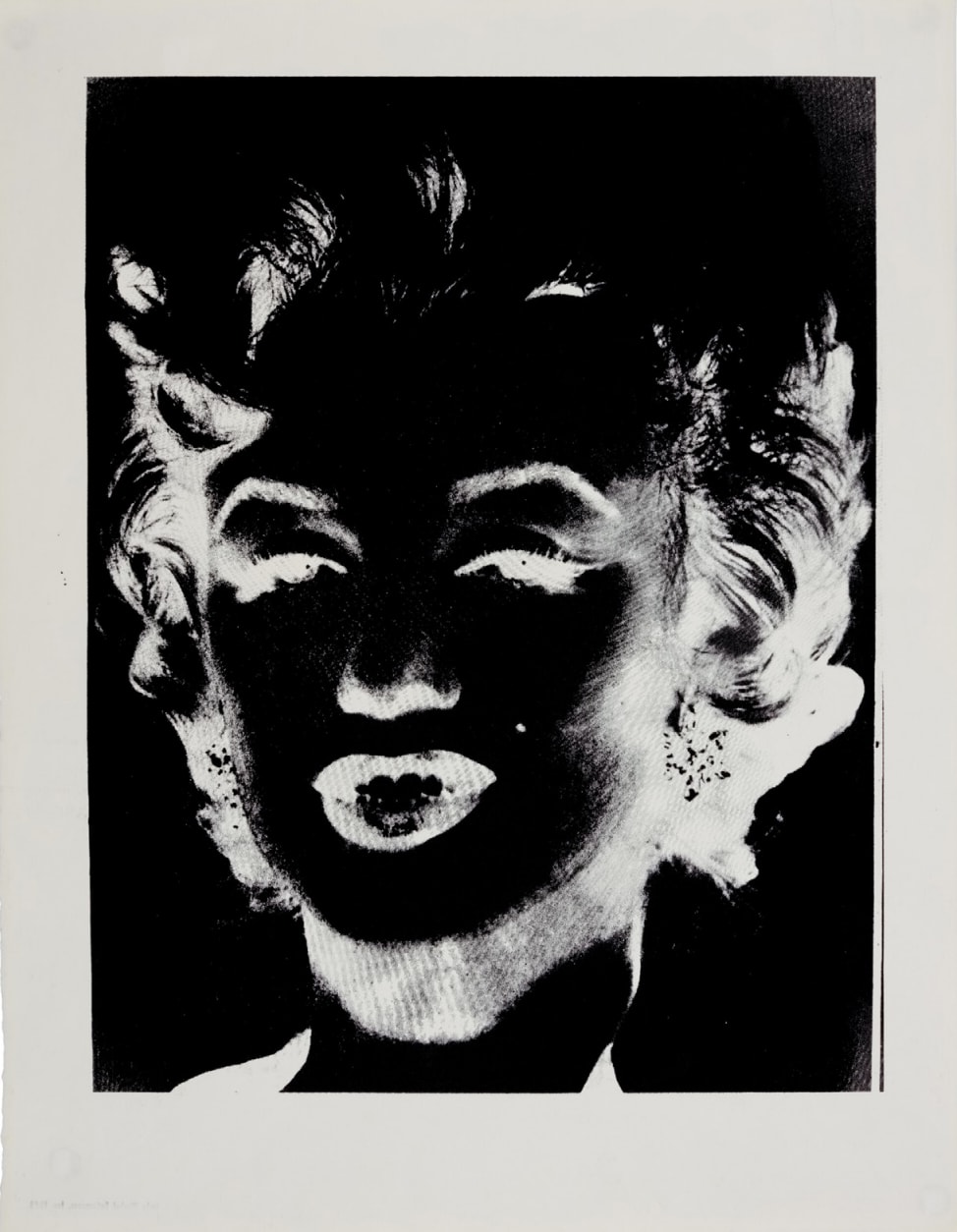
Andy Warhol
Silkscreen on Curtis Rag paper with the © Andy Warhol Enterprises, Inc. 1978 inkstamp verso lower left
56.8 x 44.2 cm
Andy Warhol’s Marilyn (Reversal) revisits one of his most iconic subjects — the face of Marilyn Monroe — through a dramatic inversion of tone and meaning. Created around 1978, this work belongs to Warhol’s Reversal Series, a late-career body of prints that reexamined his own visual legacy. By inverting the photographic negative of his famed Marilyn image, Warhol transforms a familiar Pop icon into something spectral, almost gothic.
Here, Monroe’s radiant visage — once rendered in bright, celebratory color — becomes a haunting apparition. The light areas of the original are now deep blacks, and the darks turn to ghostly whites, creating a photographic “negative” effect that recalls the process-based roots of Warhol’s practice. This stark black-and-white composition highlights the mechanical silkscreen process that underpinned his art, exposing its imperfections, halftone textures, and tonal gradations.
The Reversal Series can be seen as Warhol’s self-reflective meditation on fame, image circulation, and mortality. By revisiting his most famous portraits — of Monroe, Mao, and others — in reversed form, Warhol questioned the nature of reproduction and remembrance. The glamour that once defined his early Marilyns dissolves here into a shadowed presence, evoking both her tragic death and the enduring, ghostlike persistence of her celebrity in collective memory.
Created more than fifteen years after his original Marilyn Diptych (1962), this work embodies Warhol’s mature fascination with repetition, legacy, and the commodification of fame. The image, simultaneously radiant and void, offers a poignant commentary on the collapse between life and image — between celebrity and absence — that defines Warhol’s most enduring themes.